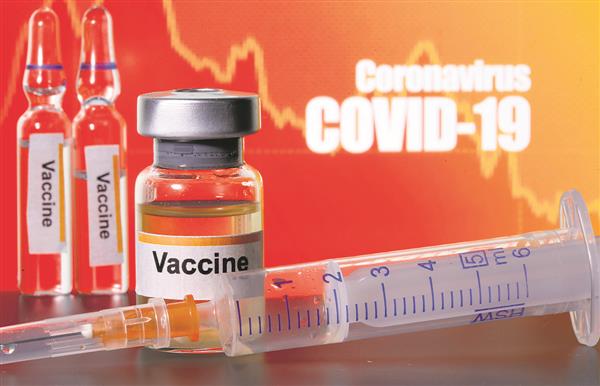
Photo for representational purpose only
Dr Sachin Mittal
Every day the number of coronavirus cases touches a new high. India has more than 1.8 million cases and is adding more than 50,000 new cases daily. Not only is the healthcare infrastructure stretched but almost every aspect of life is affected. Lakhs have lost their lives while millions have been stripped of their livelihoods across the world. The International Monetary Fund has warned of global economic recession.

No wonder there is an almost desperate need for a vaccine and the recent news about the success of initial vaccine trials was greeted with much relief. This brought a hope of resumption of normal life -- that maybe we will be able to work and socialise like earlier without any inhibitions and fear. Development of a safe and effective new vaccine against a virus which was totally unknown few months back is a challenging task. Let’s have a comprehensive look at the whole process.
How do vaccines work?
People who get infected with COVID-19 or any other virus, their immune system produces some antibodies against that disease-causing agent which are protective and prevent virus from entering cells. In vaccination, a part of the virus (COVID-19 in this case) or the weakened virus itself is put inside the human body to stimulate our immune system to generate a protective response without causing any disease, illness or side-effects. In addition, the vaccine may induce T-Cells, a type of white blood cells, that can kill the virus-infected cells.
What are the different types of Covid-19 vaccines in development?
Work on the vaccine started at a breakneck speed when the complete genetic information and structure of COVID-19 virus was deciphered in January. COVID-19 virus has a genetic material in its core and an outer covering of lipids and proteins.
Some candidate vaccines are trying to use the virus’ genetic material (Genetic Vaccines) directly or using another virus to deliver the genetic material (Viral Vector Vaccines). Some are using the outer protein covering (Protein Vaccines) while others are using dead viruses (Inactivated Whole Virus Vaccine) – all with a common goal to get a protective immune response without illness or side-effects.
What are the various stages of vaccine development?
Before reaching a point where we can just go and get a protective shot – a vaccine goes through the following phases of development.
Preclinical testing – Testing in animals like monkeys or mice to see if it stimulates immune system for a protective response.
Phase 1 – Testing in a small number of humans to check for best dose and fewest side-effects.
Phase II – Testing in hundreds of people of different ages to confirm earlier findings.
Phase III – In this phase, effectiveness is confirmed and side-effects are monitored in thousands of people as compared to other treatments and placebo.
Approval - Once a vaccine successfully completes Phase III, it can get approval. The US premier regulatory authority Food and Drug Administration (FDA) has said that for a vaccine to gain approval, it must demonstrate that it is preventing a COVID-19 infection in at least 50% of people along with safety of recipients.
Clearly when it comes to developing the COVID-19 vaccine, many steps in the process are being fast-tracked, including combining some of the phases. The US government in its operation code-named “Warp Speed” has given billions of dollars in funding for the project. The authorities on the one hand are ready to give "emergency use" authorisations as have been seen with many drugs in COVID-19 treatment but at the same time are wary of a potential disaster with any unforeseen side-effects. The SALK Polio vaccine episode in 1953 where the virus from a particular manufacturing facility was not weakened sufficiently and led to tens of thousands of children getting infected with polio, many getting paralysed and some dying due to vaccination is a stark reminder of things that may go wrong.
A leading global vaccine company Merck’s CEO Kenneth Frazier in an interview with Harvard Professor Neylor Fitzhugh said that a hurried approval process could be dangerous. Clearly experts are cautious that plenty can still go wrong and there is many a slip between the cup and the lip.
In the history of mankind, the quickest reliable vaccine to have been delivered was the mumps vaccine which took just under 5 years. It’s a mammoth task to generate a safe and effective vaccine within a year against a novel pathogen which was totally unknown sometime back and it will be a landmark success for humanity. There is a lot of hope but also cautious optimism as the last thing we want is an unsafe vaccine as that would be even worse than no vaccine. There is no margin for error and the stakes have never been higher really. Let’s keep our fingers crossed and hope for the best.
The writer is Endocrinologist, Fellow (University College of London). The views expressed are personal.
Join Whatsapp Channel of The Tribune for latest updates.



























